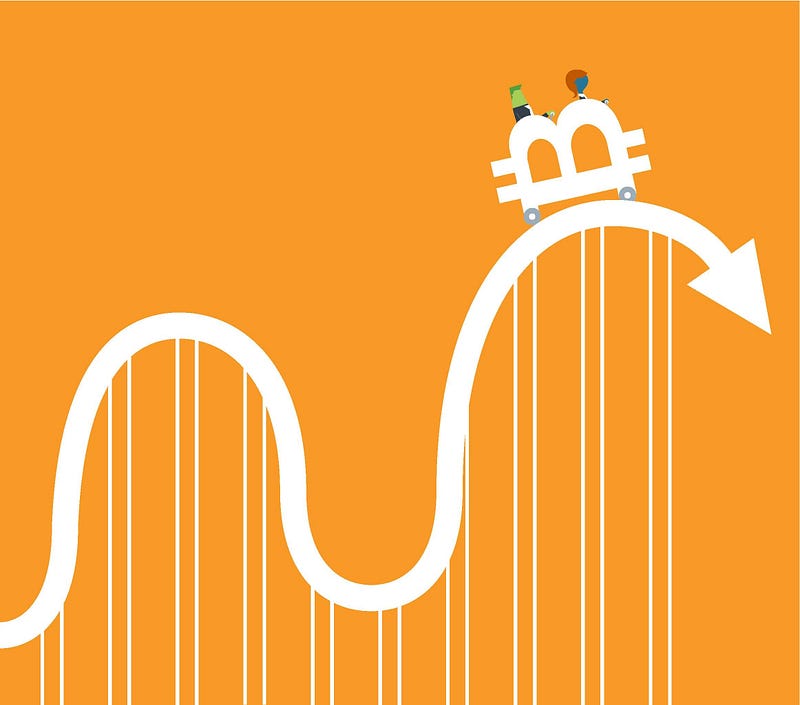Tether Connection Puts Bitcoin at Risk
An unstable digital currency called Tether, used for trading better-known currencies such as Bitcoin, could crash the whole crypto market.
Based on the research of John Griffin

Price fluctuations have come to be expected for the digital currency Bitcoin.
Recently, Bitcoin suffered a “flash crash” on Aug. 2. Its price plunged $1,458 in less than an hour. Two years ago, Bitcoin ran up to $19,891 and then collapsed to $3,200.
Such gyrations may reflect more than market volatility, says John Griffin, a finance professor at Texas McCombs who investigates fraud. They may come from manipulation. In newly published research, with Amin Shams of Ohio State University, he finds evidence that Bitcoin’s 2017–2018 bubble was inflated by a lesser-known digital currency called Tether.
Tether is called a stablecoin because its value is supposed to be fixed at 1 tether to 1 dollar. It makes trading easier, because most banks won’t exchange cryptocurrencies for dollars. Around 60% of bitcoin transactions happen in tethers.
But Tether may not be so stable, Griffin says. It mints new coins without having full cash reserves to back them up. It’s under investigation by the Commodity Futures Trading Commission, the U.S. Department of Justice, and the New York State Attorney General. Its instability, Griffin warns, could pose a threat — not just to Bitcoin but to the entire cryptocurrency market. He recently explained how.
What first drew your attention to Bitcoin and Tether?
This space has grown with little regulation and spotty oversight. Areas like this are historically prone to fraud and manipulation.
You found a web of connections between the two currencies. For one, Tether has the same corporate parent — iFinex Inc. — as a major bitcoin exchange called Bitfinex.
We also found there was strong bitcoin buying activity coming out of Bitfinex and using tether. On other exchanges, we didn’t find this kind of activity.
Was the pattern that when bitcoin prices dipped, large amounts of new tethers were issued? And that the new tethers were used to buy bitcoins, pushing prices back up?
That’s right. In our research, most of the price effects on Bitcoin happened right after they printed more tether and pushed it into the system. Over one year, the 95 hours with the strongest tether flows accounted for 59% of Bitcoin’s price increase.
You also questioned whether Tether was minting those coins without the dollars to back them.
They haven’t been transparent about it. In spite of requests from critics, they still haven’t provided an audit of their cash reserves. All they’ve ever provided is a snapshot of the funds they had on a particular date. It doesn’t show how the funds got there or where they came from. Anybody can borrow money for a day.
Tether revealed in a recent legal filing that its currency is only 74% backed by cash. What does that mean for your research?
They admitted that what they claimed previously was a lie. In some sense, that admission is external evidence for the validity of our paper.
Why does it matter that Tether has incomplete cash reserves?
It’s like having your money at the bank. You think your accounts are all backed up with dollars. Then you find out your bank isn’t holding all the dollars it says it is. If you try to get your dollars back, it doesn’t have enough to pay you.
When you did your original research, only $2 billion in tethers were circulating. Today, it’s $10 billion. Should investors be concerned?
It’s a huge risk for the cryptocurrency space. A lot of people don’t realize how exposed they are, because so many transactions occur in tethers. If you removed those tethers, it would lead to a significant crash in cryptocurrency prices. It could cut across multiple exchanges.
How could Tether collapse?
Its biggest risk is getting shut down by regulators. So far, cryptocurrencies have been lightly regulated, but it’s probable that a lot of regulations that apply to other exchanges apply to them.
Part of the appeal of cryptocurrencies is that they’re outside government control. Would more regulation stifle the market?
I’m not a fan of excessive regulation, but one thing we’ve learned throughout history is that you need the rule of law to have proper capital markets. I’m seeing the same thing happen in the cryptocurrency market. It’s really stalled the past three years. The capital formation process hasn’t happened to the extent everybody was hoping. Instead, it’s a place where speculators and criminals trade.
If Tether goes away, will cryptocurrency traders need other stablecoins to take its place?
Stablecoins can be a good thing, but they need to be operated in a transparent and open fashion, and they need to be fully backed by cash reserves. That would provide a lot of trust. Ultimately, it would help the crypto market.
“Is Bitcoin Really Untethered?”is published in The Journal of Finance.
Story by Steve Brooks


